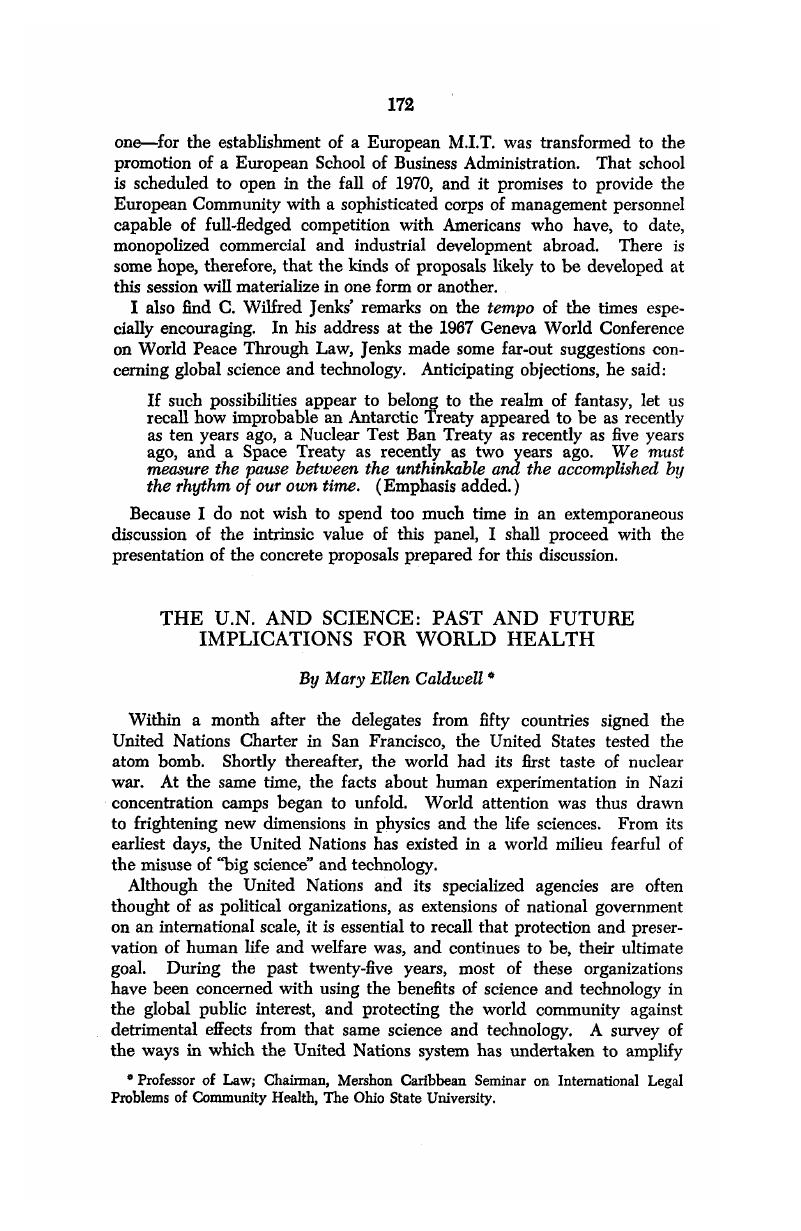No CrossRef data available.
Article contents
The U.N. and Science: Past and Future Implications for World Health
Published online by Cambridge University Press: 28 March 2017
Abstract

- Type
- Panel: The United Nations and Science
- Information
- Copyright
- Copyright © American Society of International Law 1970
References
1 Report of the United States Delegation to the United Nations Conference on the Application of Science and Technology for the Benefit of the Less Developed Areas 259 (Prepared by AID for the Department of State, 1963).
2 Katz, Sherman E., “The Application of Science and Technology to Development,” 22 Int. Organization 412 (Winter, 1968)CrossRefGoogle Scholar.
3 9 War/Peace Report 10 (Feb. 1969). See also Samuel P. Haynes, , “An International Peace Corps: The Promise and Problems,” The Public Affairs Institute, 1961Google Scholar.
4 United Nations, Introduction to the Annual Report of the Secretary-General on the World of the Organization, June 16, 1968-June 15, 1969, at 44-45 (OPI/374-69-21161, Sept. 1969-15m).
5 See Lelyveld, Joseph, “Indian Academies Decry U. S. Impact,” New York Times, Jan. 12, 1969, p. 7Google Scholar.
6 New York Times, March 14, 1970, p. 31.
7 Kennan, George F., “To Prevent a World Wasteland,” 48 Foreign Affairs 405 (April, 1970)CrossRefGoogle Scholar.
8 Committee on Resources and Man of the Division of Earth Sciences, National Academy of Sciences—National Research Council, Resources and Man: A Study and Recommendations (1969).
9 Institutions for Effective Management of the Environment, Report of tbe Environmental Study Group of the Environmental Studies Board of the National Academy of Sciences and National Academy of Engineering, Part I (January, 1970).
10 Sabato, Jorge A., “Some Comments on the Problem of the Best Utilization of Scientific and Technical Resources,” Panel on Science and Technology, Ninth Meeting, Applied Science and World Economy, App. A, p. 521Google Scholar. Proceedings, Committee on Science and Astronautics, U. S. House of Representatives, 90th Cong., 2d Sess., Jan. 23-25, 1968.
11 Statement of Dr. Alexander King, Director for Scientific Affairs, Organization for Economic Cooperation and Development, Panel on Science and Technology, op. cit. note 10 above, at 152-160.
12 Jenks, C. Wilfred, “The New Science and the Law of Nations,” 17 Int. and Comp. Law Q. 327 (1968)10.1093/iclqaj/17.2.327CrossRefGoogle Scholar.
13 United Nations, A Study of the Capacity of the United Nations Development Sys tem (DP/5) 1969.
14 Problems of the Human Environment 4, Report of Secretary-General, U.N. ECOSOC, 47th Sess., Agenda Item 10, May 26, 1969 (E/4667).




